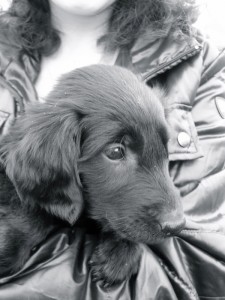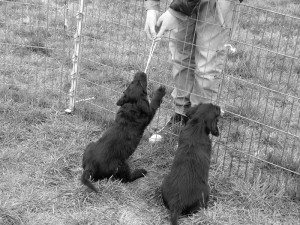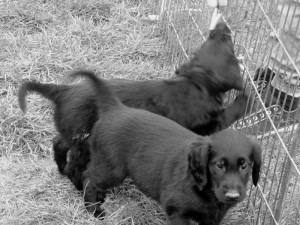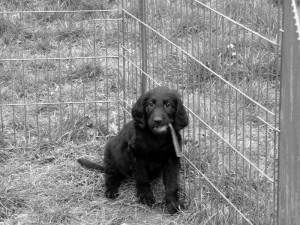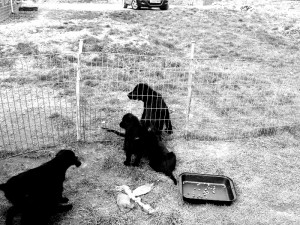 Breeding for the whole dog
Breeding for the whole dog
I endeavour to breed for intelligence, working ability, health and looks!
The flatcoated retriever`s roots go back a long way – between the 19th and the 20th century, the flatcoated retriever was the hunter`s dog of choice. This was probably the heyday of the flatcoat, before he became surpassed in popularity by the labrador and the golden retriever. Although the breed almost died out after the second World War, a few enthusiasts were able to keep the breed going, amongst them Colin Wells and Nancy Laughton. The breed was a working dog first and foremost and this I keep in mind when selecting stock to breed from and stud dogs to complement my bitches.
I breed in the Deutsche Retriever Club, which is linked to the FCI, the Fédération Cynologique Internationale. Brood bitches are x-rayed for hip scores and elbow scores. Patellas are checked by a qualified clinician. Eyes must be free of Goniodysplasia and free of any hereditary diseases like PRA. A minimum of two working or obedience tests must be passed to qualify for the bitch’s breeding licence. Furthermore, a bitch has to receive a grading of “Very Good” in her physical confirmation when inspected by a show judge. Bites must be scissor bites.
Puppies are born in the house and spend the first eight weeks of their life in the household and the garden, getting used to the sounds of life going on, like the Dyson, washing machines, dishwashers, lawn mowers and so on. They will be trained to come to the whistle by associating it with feeding time. Before they leave home, they will have been in the car and have had their first try-out with cold game.
Before they leave me for their new owners, they will be microchipped, wormed, vaccinated and have had an inspection by a member of the DRC. They will have their own pet passports and pedigrees issued by the DRC. I will provide a sample of food the puppy has been used to and a retriever lead.
Whilst I cannot guarantee the health of a puppy anymore than expectant parents can guarantee the health of their child, I do my utmost to ensure that the puppies I breed are healthy in body and sound in mind. I ask my puppy buyers to have the hip and elbows x-rayed once the dog is one year of age, and also to have their eyes checked. Only through doing this can I check whether the breeding has been successful and ensure the health of future generations.
“However good-looking and soundly built a dog may be, he is not worth his salt unless he has a kindly temperament, a will to please and possesses an intelligence, sagacity and fidelity that delights his owner. In these attributes the flat-coat should excel.”
Nancy Laughton, “A Review of the Flat-coated Retriever”


